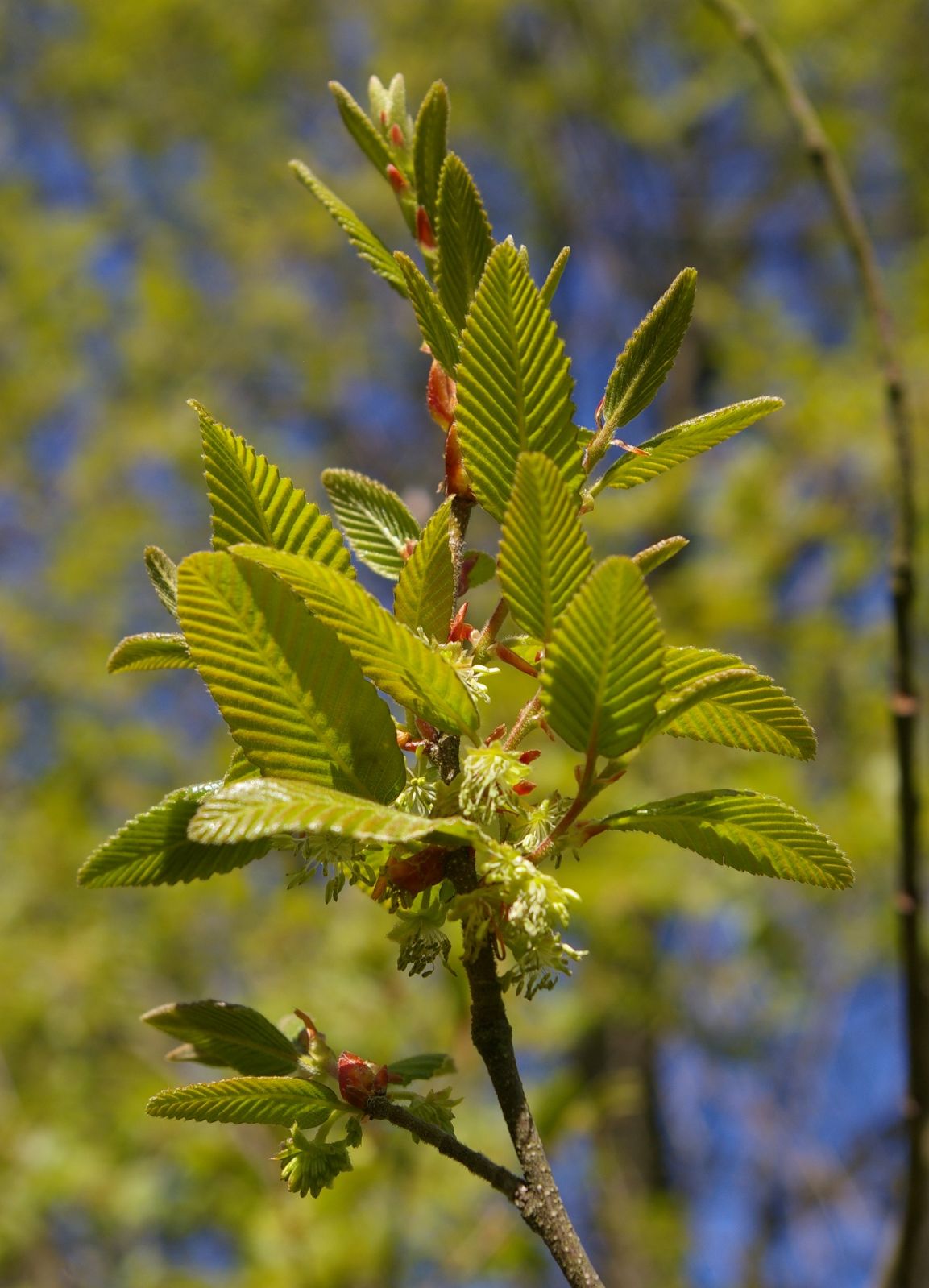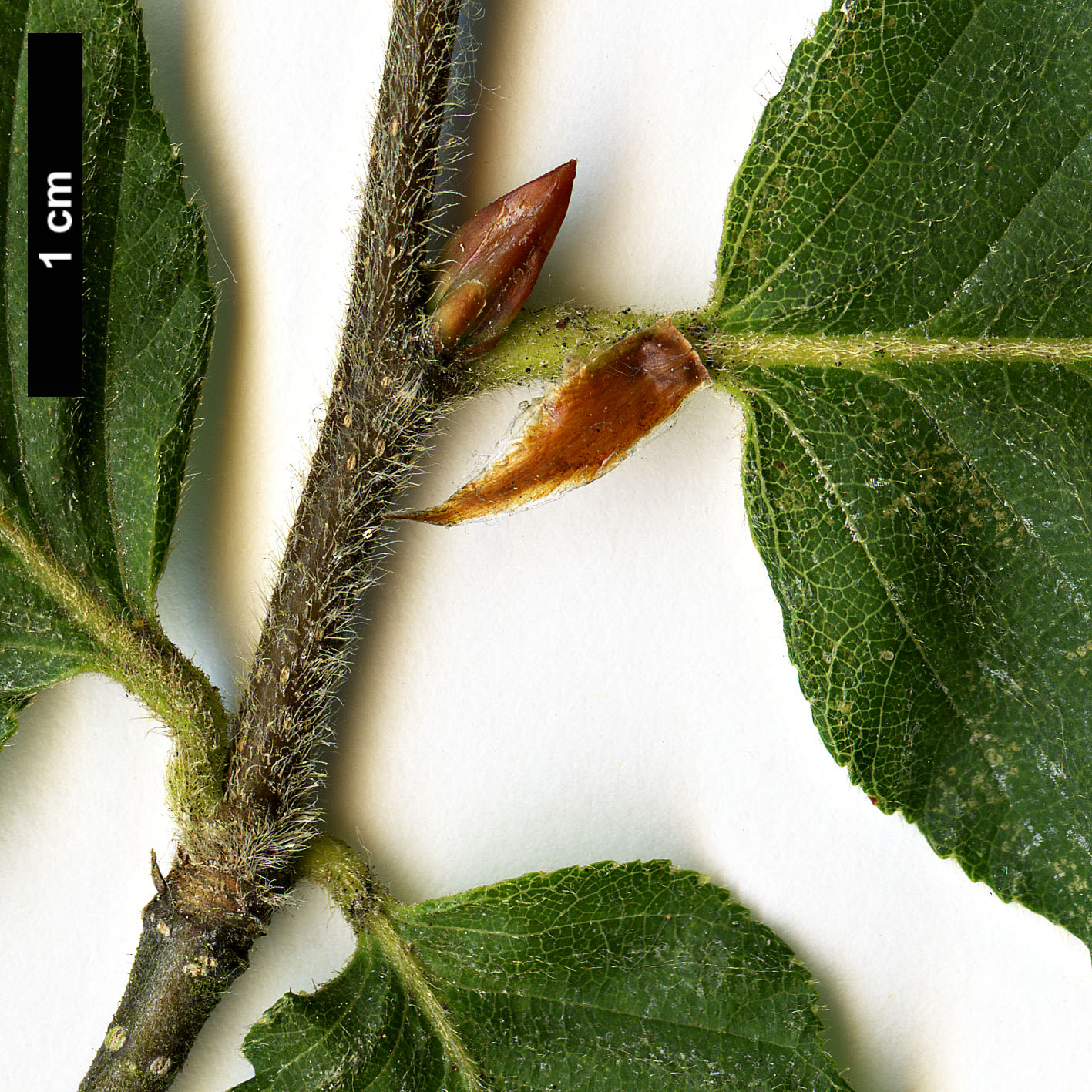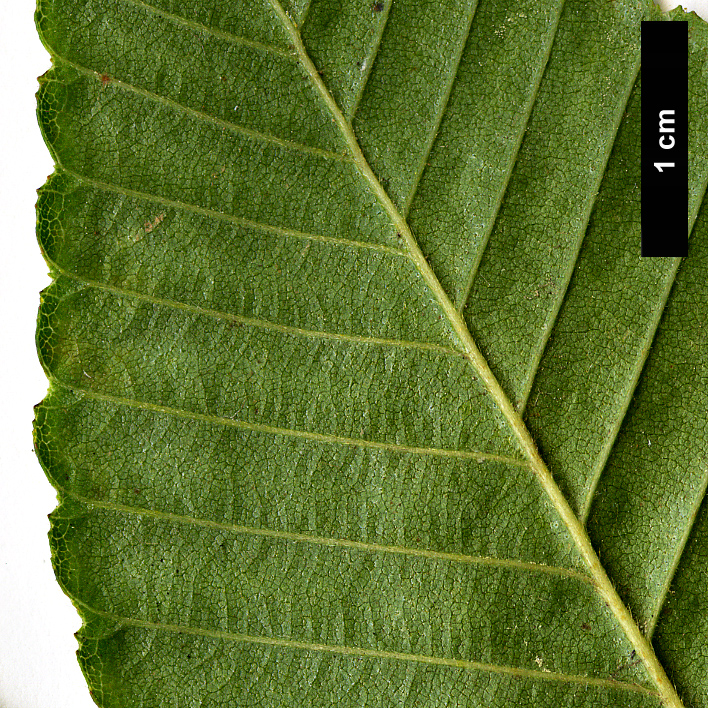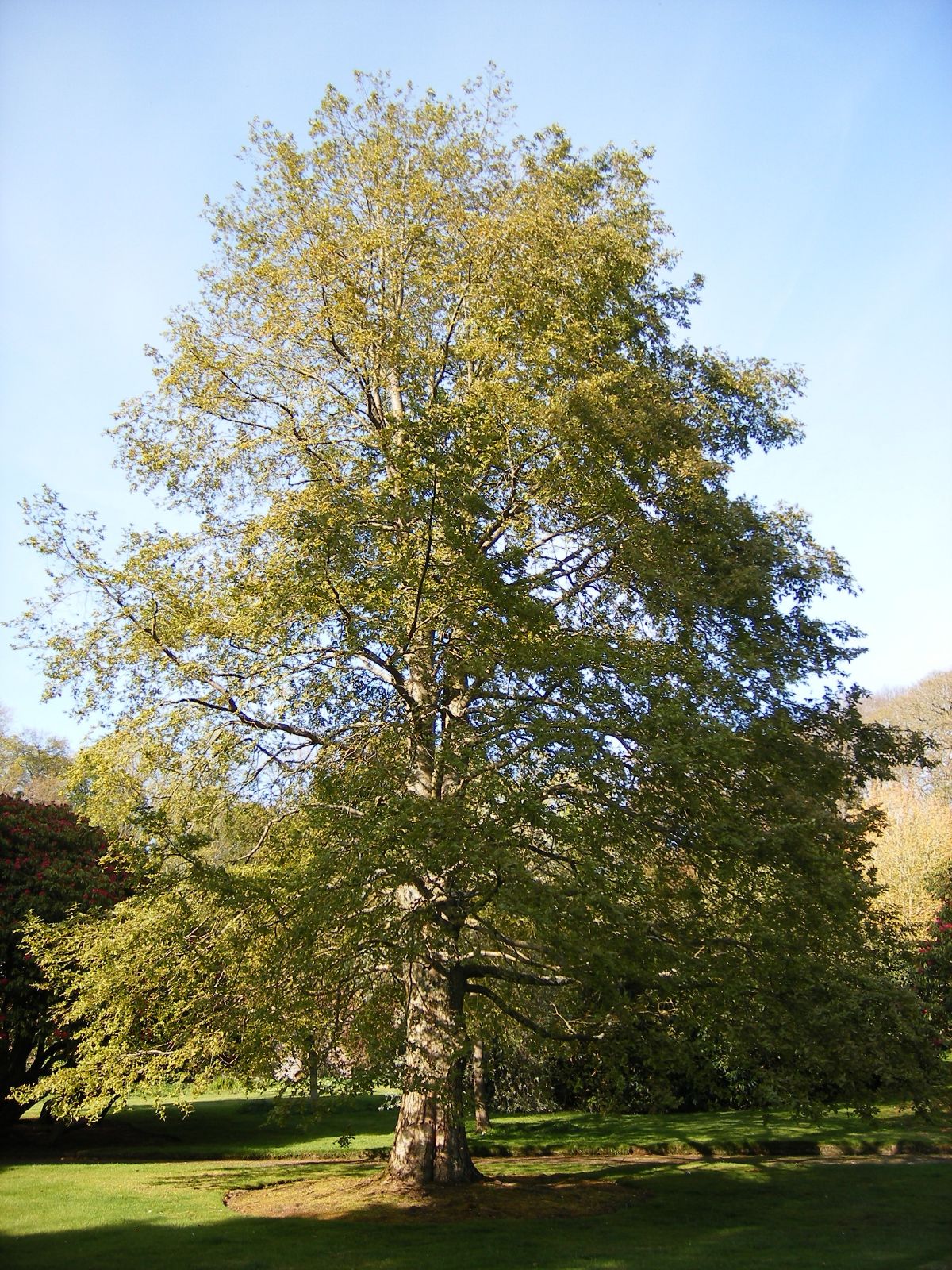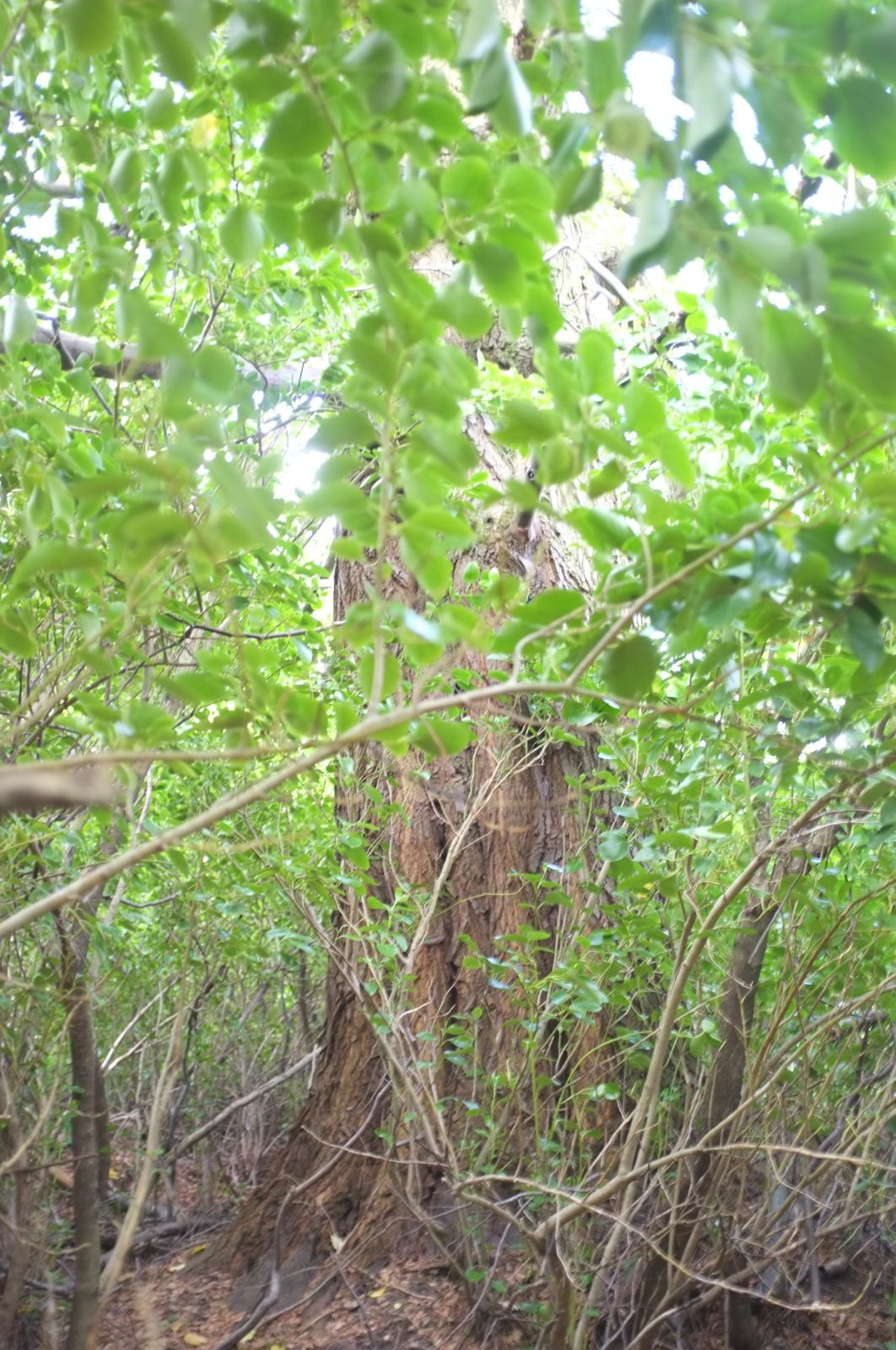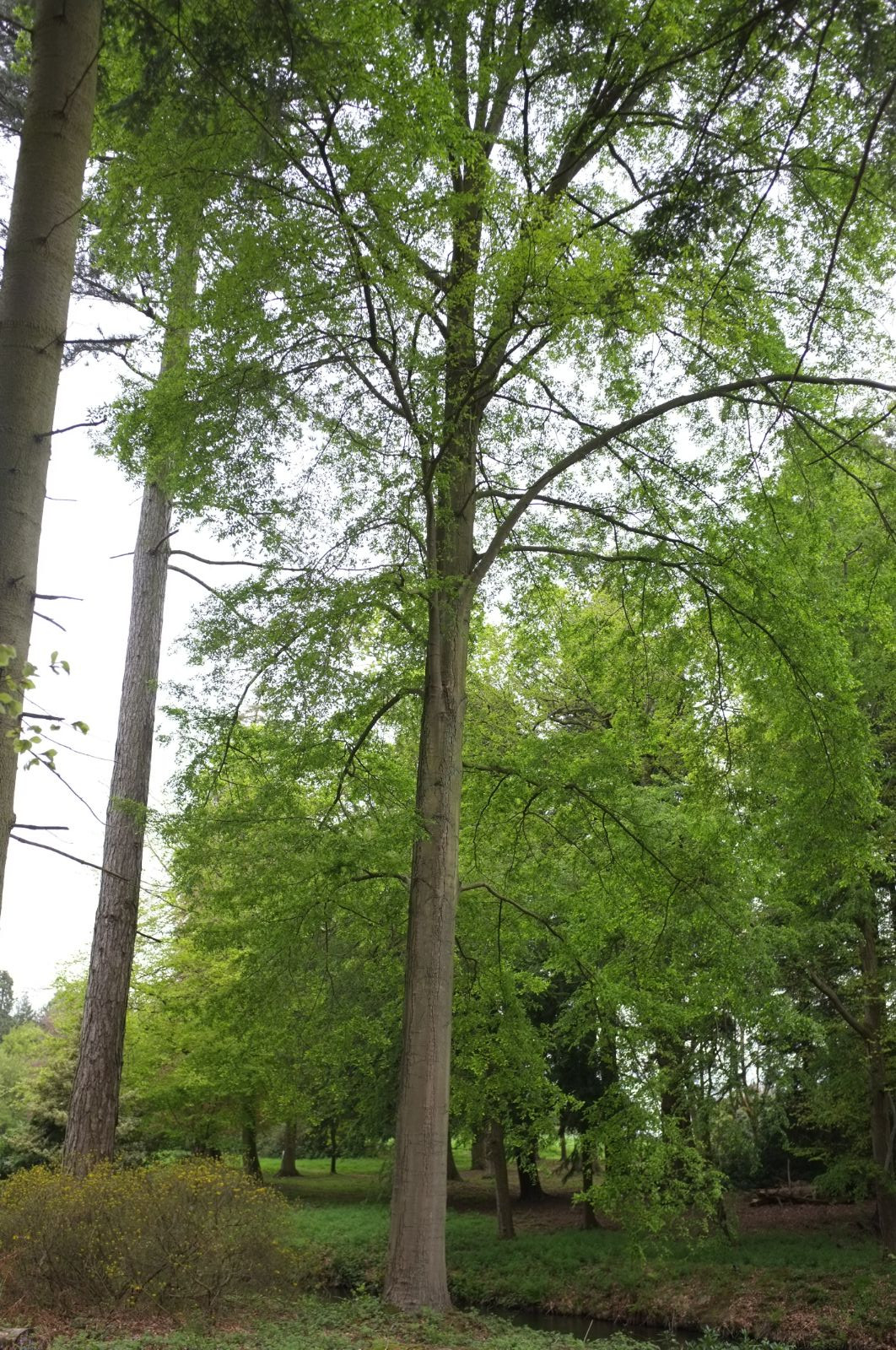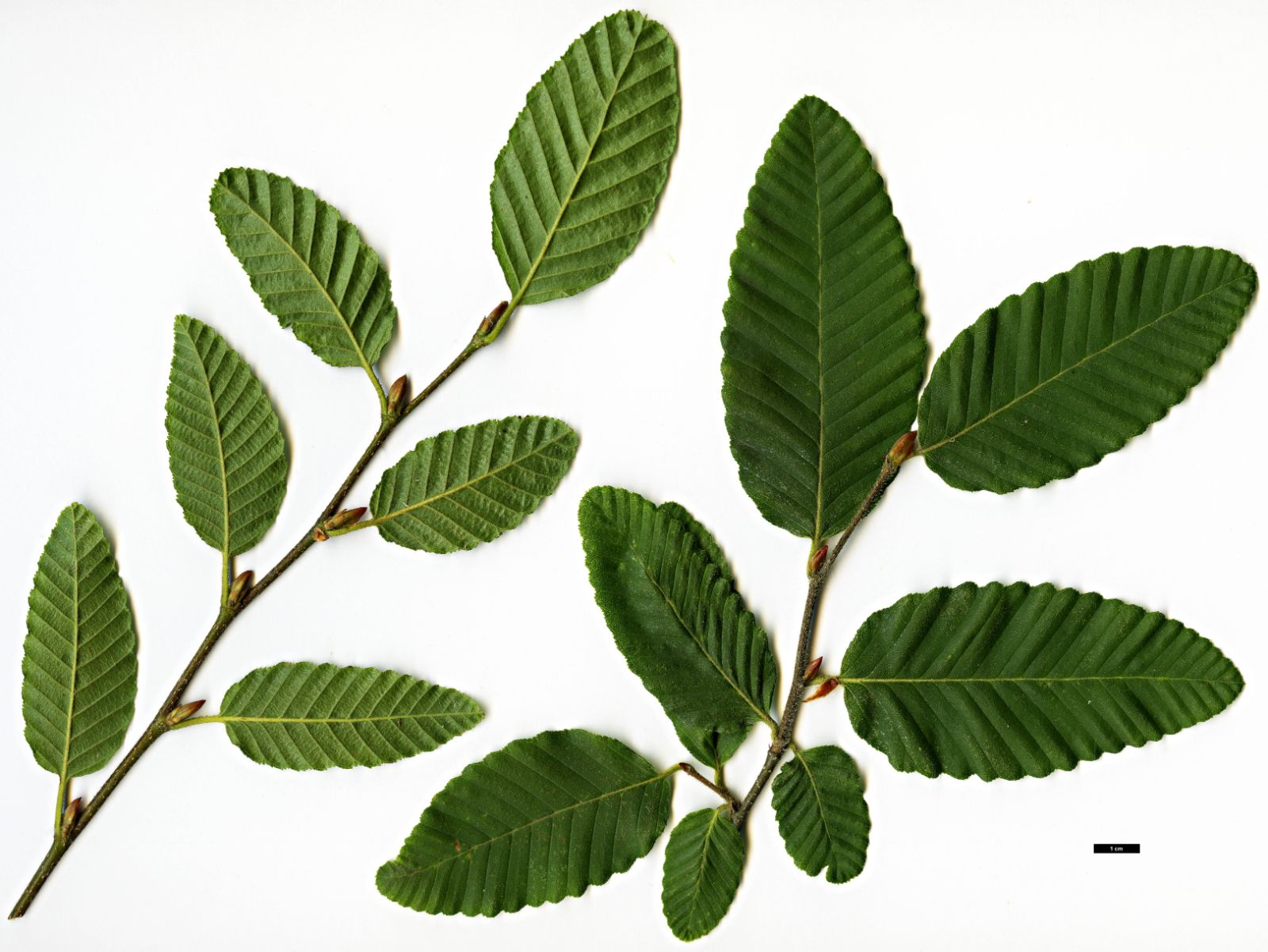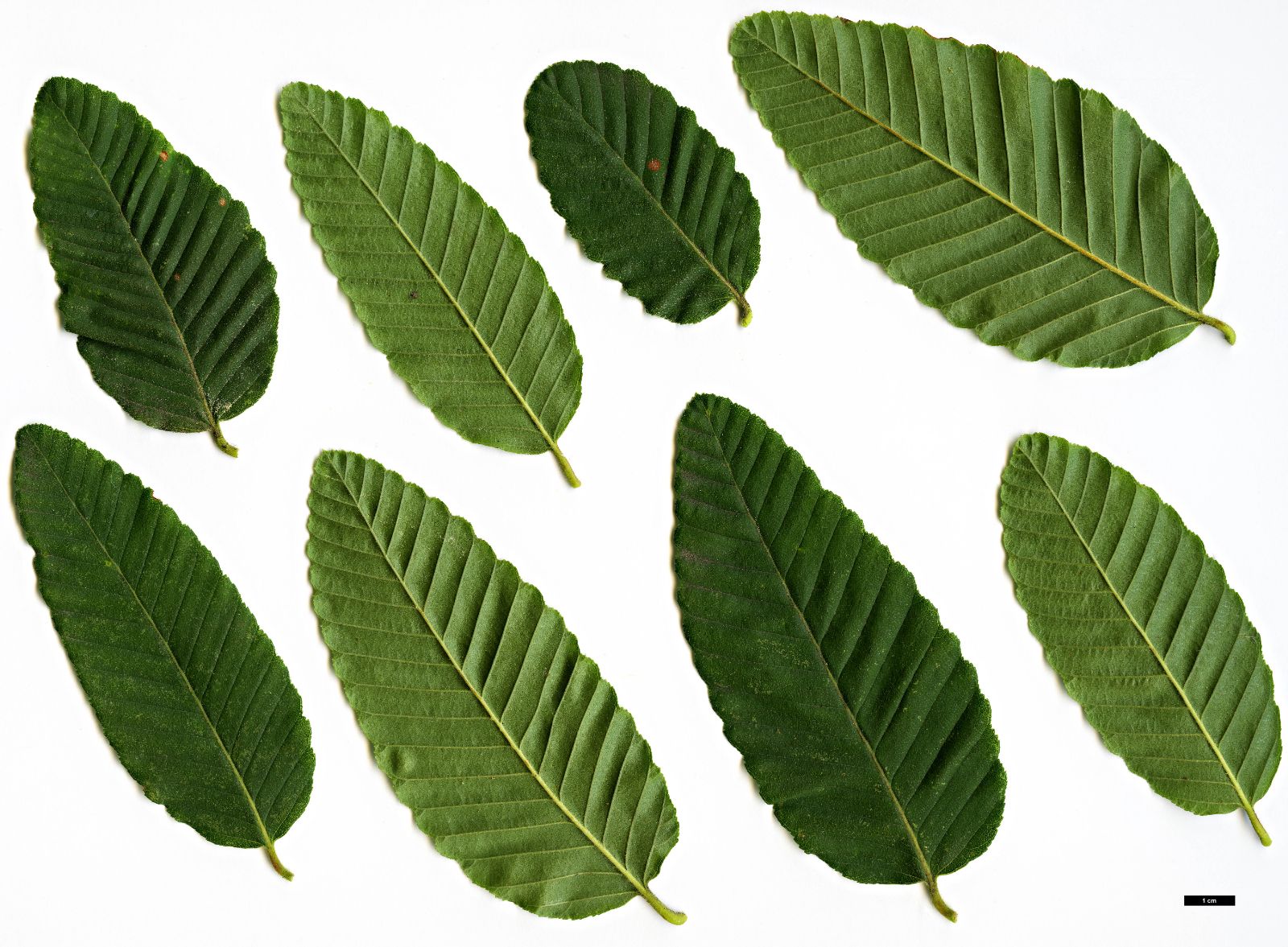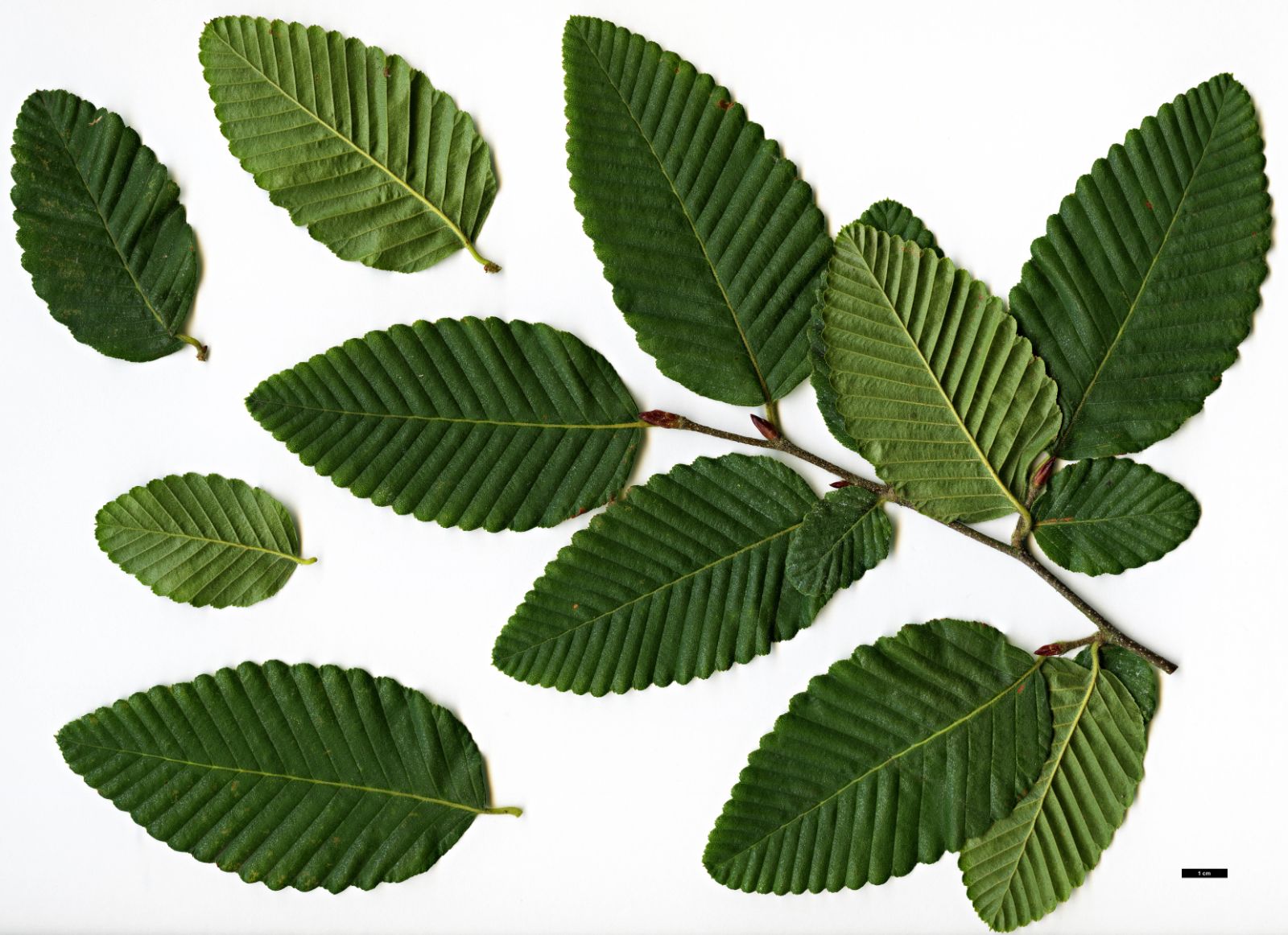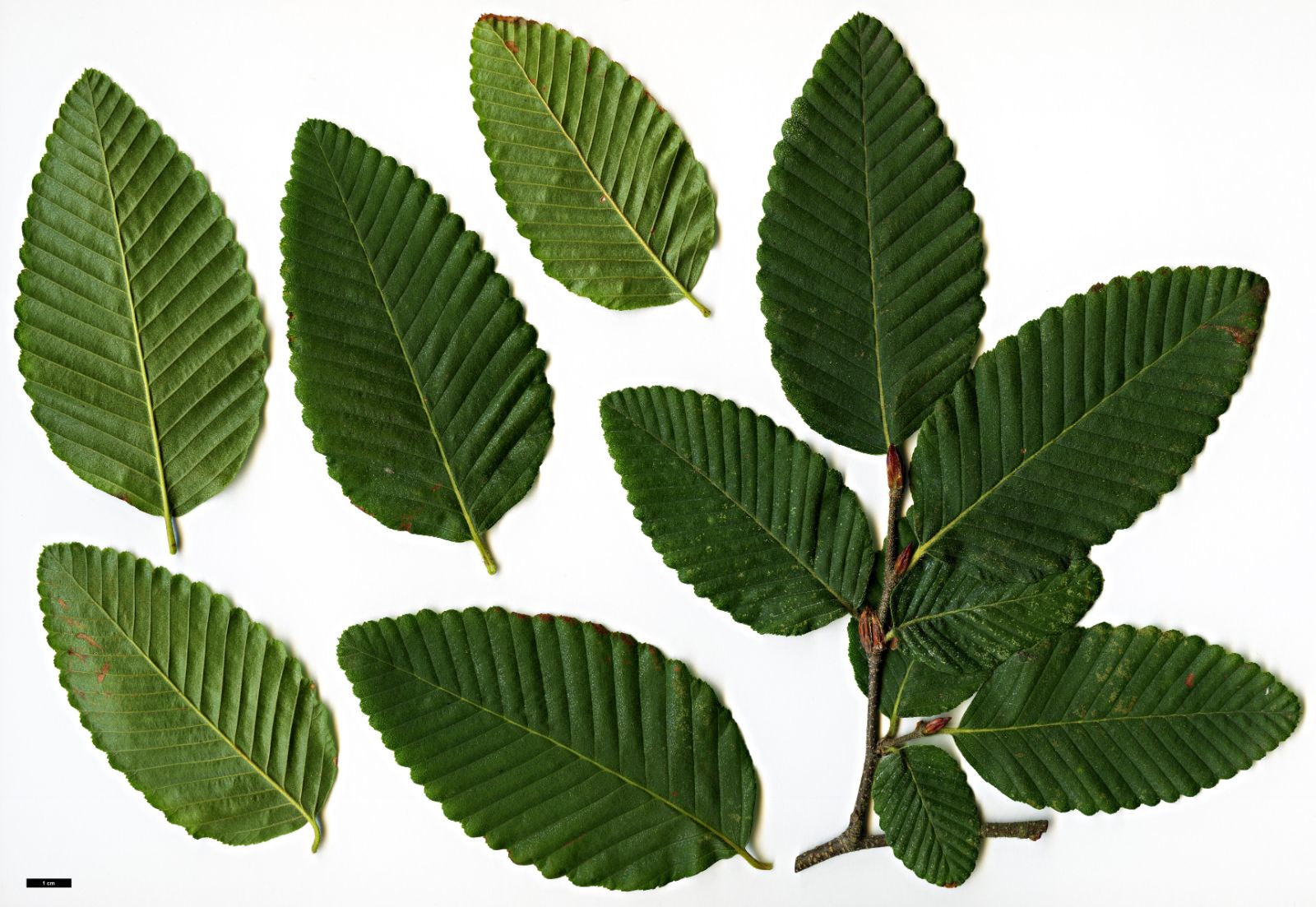Nothofagus alpina
Sponsor
Kindly sponsored by
Col. Giles Crisp
Credits
Owen Johnson (2020)
Recommended citation
'Nothofagus alpina' from the website Trees and Shrubs Online (treesandshrubsonline.
Genus
Common Names
- Rauli
- Raulí
Synonyms
- Nothofagus nervosa (Phil.) Dimitri & Milano
- Nothofagus procera (Poepp. & Endl.) Ørst.
- Lophozonia alpina (Poepp. & Endl.) Heenan & Smissen
- Fagus nervosa Phil.
- Fagus procera Poepp. & Endl.
Other taxa in genus
- Nothofagus alessandrii
- Nothofagus antarctica
- Nothofagus betuloides
- Nothofagus × blairii
- Nothofagus cliffortioides
- Nothofagus cunninghamii
- Nothofagus × dodecaphleps
- Nothofagus dombeyi
- Nothofagus fusca
- Nothofagus glauca
- Nothofagus gunnii
- Nothofagus × leonii
- Nothofagus macrocarpa
- Nothofagus menziesii
- Nothofagus menziesii × obliqua
- Nothofagus moorei
- Nothofagus nitida
- Nothofagus obliqua
- Nothofagus pumilio
- Nothofagus solandri
- Nothofagus truncata
A tree to 40 m tall (reputedly to 50 m (Wikipedia 2020)); bole often straight and cylindrical. Bark grey, gradually cracking from the age of about 25 years into narrow vertical plates or ridges. Young shoots brown/green, c. 2 mm thick, with a short brownish down, forming neat herringbone patterns on strong growths, with slender conic red/green buds 6–10 mm long. Leaves deciduous, 4–10 × 1.5–4 cm, slightly corrugated between the main veins, rounded at the base and slightly pointed or finely rounded at the tip; matt, mid-green and finely downy on both sides; upper surface glandular and slightly sticky; finely and sharply toothed and sometimes slightly lobulate; 14–18 pairs of neatly parallel main veins, sunken above and prominent beneath; petioles downy, 5–8(–10) mm. Flowers 5–6 mm wide, males solitary, females in 3s. Cupules c. 10 mm long; lamellae pinnatifid and moss-like, more than 4 mm long, gland-tipped; nutlets less than 5 mm long (Bean 1976); (Nothofagus (2007–2008); (Vazquez, F. M. & Rodriguez, R. A. (1999).
Distribution Argentina In the Andes in the Neuquén province near the Chilean border. Chile In the central southern coastal cordillera and Andes (Maule, Ñuble, Bío Bío, La Araucanía, Los Ríos and Los Lagos regions).
Habitat Mixed mountain forests to 1000 m; avoiding frost-pockets and tending to give way to N. obliqua in drier sites and to N. dombeyi in the wettest ones. It is almost confined to deep, free-draining volcanic soils.
USDA Hardiness Zone 7-8
RHS Hardiness Rating H5
Conservation status Near threatened (NT)
Taxonomic note Raulí was originally described by Poeppig and Endlicher in 1838, who divided the population into two taxa: Fagus alpina from high altitudes and F. procera from lower sites The first trees grown in the UK and Ireland were for a long time understood to belong to (Notho)fagus procera; the name Nothofagus × alpina was later recommended by van Steenis (van Steenis 1953) to cover putative hybrids between Raulí with N. pumilio, but was subsequently used by botanists in the UK at least to cover known hybrids of Raulí with N. obliqua. In 1987, Lennon et al. (Lennon et al. 1987) showed that the name Nothofagus procera was illegitimate, since Poeppig and Endlicher’s basionym had already been published by R. A. Salisbury in 1796 for Castanea sativa; the replacement name for Raulí now became N. nervosa (Phil.) Dimitri & Milano. In 2004, Grant and Clement (Grant & Clement 2004) concluded that Poeppig and Endlicher’s herbarium specimen of F. alpina actually represented pure Raulí rather than a hybrid, and that, as the name F. procera was illegitimate, N. alpina should be adopted as the correct name for this species, and that the hybrid with N. obliqua should be given a new name (N. × dodecaphleps) (Grimshaw & Bayton 2009). In 2013, Heenan and Smissen (Heenan & Smissen 2013) recommended that the genus Nothofagus should be subdivided, and published Lophozonia alpina, but as explained in the genus article, Heenan and Smissen’s splitting has not generally been accepted beyond New Zealand.
As the taxonomic note suggests, Raulí has had a confused identity over the two centuries since European botanists first encountered the species. It is, however, a distinct and memorable tree, whose name in the native Mapuche language is useful. With its large deciduous leaves and many pairs of neatly parallel veins, Raulí is only really likely to recall Nothofagus alessandrii (which actually belongs in different section of the genus, Section Fuscospora) and the possible split N. rutila, a tree from further north in Chile (Valparaíso and Metropolitana regions) which was first described in 2000 (Ravenna 2000) but whose status as a good species is not yet universally accepted and which has probably not yet been introduced to Europe. Hybrids with N. obliqua are widely grown enough to have their own account in Trees and Shrubs Online, under N. × dodecaphleps.
Raulí was introduced to Britain in 1910 by F.R.S. Balfour of Dawyck in the Scottish Borders – ironically, one of few big gardens in Britain which are too cold in winter for the species to survive reliably. Balfour distributed plants from 1914 onwards (Bean 1981). One surviving tree, planted by Reginald Cory at Dyffryn in Glamorgan in 1912, must be from this introduction (Tree Register 2020), though since Raulí appears to be relatively long-lived for a Nothofagus in cultivation it is likely that a few more of the biggest specimens, which lack a known provenance, will also be from Balfour’s seed. There was also an introduction to Kew in 1913, when the Royal Botanic Gardens received a share of the seeds imported by the Société Dendrologique de France (Bean, W.J. (1914). The species was being sold by Veitch’s nursery by 1920, which is the year when a tree at Caerhays Castle in Cornwall (Tree Register 2020), since lost, was purchased.
Raulí has earned a quite widespread place in the UK and Ireland as an ornamental specimen, where there is enough room; the winter silhouette is elegant, the leaves flush briefly bronze in spring, and autumn colours are usually some shade of orange. Growth is most reliable in the milder and more humid western and northern parts; the species certainly dislikes hot dry summers, and damage to the leader in areas prone to late spring frosts may also result in trees with weak forks or heavy low limbs. It is grown as far north as Olav’s Wood on South Ronadsay on the Orkneys (Olav’s Wood 2020). The largest example, at Brodick Castle on the Isle of Arran, was 27 m × 1.69 m dbh in 2018 (Tree Register 2020), when its gigantic, columnar bole was hidden in a dense self-sown grove of New Zealand Griselinia trees; on the day of the author’s last visit, National Trust for Scotland volunteers were hard at work cutting these back. Another huge specimen, planted in 1928 at Mount Usher in Co. Wicklow, was 32 m × 1.47 cm dbh in 2015 (Tree Register 2020). The tallest – and perhaps the most beautiful in terms of the straightness of its trunk and its regularly radiating slender limbs – was planted around the middle of the 20th century by Lord Bradford in his garden at Weston Park in Staffordshire: this is an unexpectedly dry place for the tree to grow so freely, but this particular example is ideally situated next to a lake and in woodland shelter. In 2019 it was 35 m × 77 cm dbh (Tree Register 2020) and still seemed to be adding height quite fast. The typical straight-stemmed habit would make the Raulí a good candidate for avenue planting; there is a young avenue across the Hammersmith or Margravine Cemetery in west London, where the microclimate is probably too dry for the trees to reach monumental sizes (Tree Register 2020), but another, leading the short distance from the main drive to the mausoleum at Mount Stuart on Scotland’s Isle of Bute, may one day boast several giants (T. Christian pers. comm. 2020).
Like nearly all Nothofagus Raulí avoids alkaline soils in the wild, but the tree at Dyffryn, mentioned above, has thrived in quite a high pH. In 2013 there were also two large trees flourishing over well-weathered limestone at Merlewood in southern Cumbria (Tree Register 2020).
Raulí produces a fine timber, similar to that of European Beech, and has been trialled in a number of plantations in the UK and Ireland since the 1950s (Savill 2019). In these situations, particularly where summers are wet, natural regeneration is frequent (though not as abundant as for Nothofagus obliqua, with which plantation trees in England have spontaneously hybridised to give rise to N. × dodecaphleps); seedlings are moderately shade-tolerant (Mason et al. 2018). Plants can also be propagated by means of cuttings put into gentle heat in July or August (Bean 1981).
In more continental parts of Europe, in northern France, Germany, and Denmark, Raulí has not proved reliably hardy (Søndergaard 1997), though with a changing climate summer droughts may take over as the main limiting factor; Søndergaard reported one 8 m specimen suriviving in 1997 in the Bergen Botanical Garden in Norway, and there are records of three small examples on Belgische Dendrologie’s list of notable trees in Belgium (Belgische Dendrologie 2020). It is cultivated at the Washington Park Arboretum in Seattle (Washington Park Arboretum 2013). Remarkably little information is available on the species’ success as an ornamental in other suitable parts of the world. Online resources include herbarium specimens collected from the grounds of the Forest Research Institute in Rotorua and at Orton Bradley Park near Canterbury in New Zealand, and a photo of foliage of an example in the Dunedin Botanic Garden in that same country. It was planted at Hackfalls Arboretum, also in New Zealand, in 1961 and 1966 (Hackfalls Arboretum 2020).
Since 2009, Raulí in Britain, especially in forestry plantations, have proved vulnerable to fatal infections by the pathogen Phytophthora pseudosyringae (Mason et al. 2018), though less so than tends to be the case for Nothofagus obliqua.

